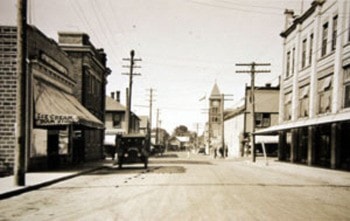For someone who lived in the small community of Cowichan Lake in the 1920s, a day trip to Duncan was not an everyday occurrence; especially if that someone was a child.
For 11-year-old Trevor Green and his slightly older brother Brian, it was not only a treat, it was also an adventure. If the circumstances were right – that is if the brothers needed new “garments or boots” or an unavoidable dental appointment, as Trev once explained – a trip with their mother was in order.
Like many locals at that time, the Greens did not own a motor vehicle, which meant that they made the trip in one of Bill Pourier’s local “stage lines” vehicles. The twice daily return trips to Duncan were made possible through the use of Pourier’s “fleet” of cars; an antiquated Chalmers and two seven-passenger McLaughlin-Buicks.
Since the road wasn’t much more than a trail, the stage left at 8 a.m. from the village and took upwards of an hour to reach its destination. Along the way, Trev (as his mother called him) enjoyed every bump and turn the road made. Years later, he described the route as such: “The road, through the magnificent forest, made sharp turns to avoid great trees, or curved gradually to avoid the steeper hills.”
This was many years prior to the construction of Highway 18.
Trev enjoyed the various stops at the small logging camps set along the old road.
The first stop was Charter Siding (about four miles out of the village; close to present day man-made Mayo Lake), where outgoing mail along with the occasional passenger were, as Trevor would have said, “collected.”
The journey slowly continued through the beautiful forest, with stops at Halfway Crossing (now known as Stoltz Road), Mowatts Swamp, and Mayo Camp (now known as Paldi).
To catch the stage, passengers from Mayo Camp had to walk out to the road and wait for its arrival. At that point, the mail sacks (incoming and outgoing) were placed in a “sturdy wooden box nailed to a tree.”
When full, the stage was anything but roomy. The vehicles were fitted with two small jump seats behind the front seat of the car, with a board placed across them onto which three or four children passengers were squeezed.
Four “thin or averaged size adults,” as Trevor explained it, sat in the rear, with a fifth adult and one small child crammed into the front seat next to the driver. Not an inch of space was wasted. Passenger luggage was strapped to the outside running boards of the car. Using this method, nine passengers – or ten if they were very slim – could be accommodated in one trip.
Upon reaching Curries Hill, the thick, magnificent forest disappeared, and were replaced with “fields and scattered clearings,” which had been logged by earlier residents.
It was at this point that young Trevor and Brian knew that it wouldn’t be long before they reached the excitement of a day in Duncan.
The conclusion to this story will be in next week's paper.
Research Kaatza
Station Museum
(Trevor Green papers)
